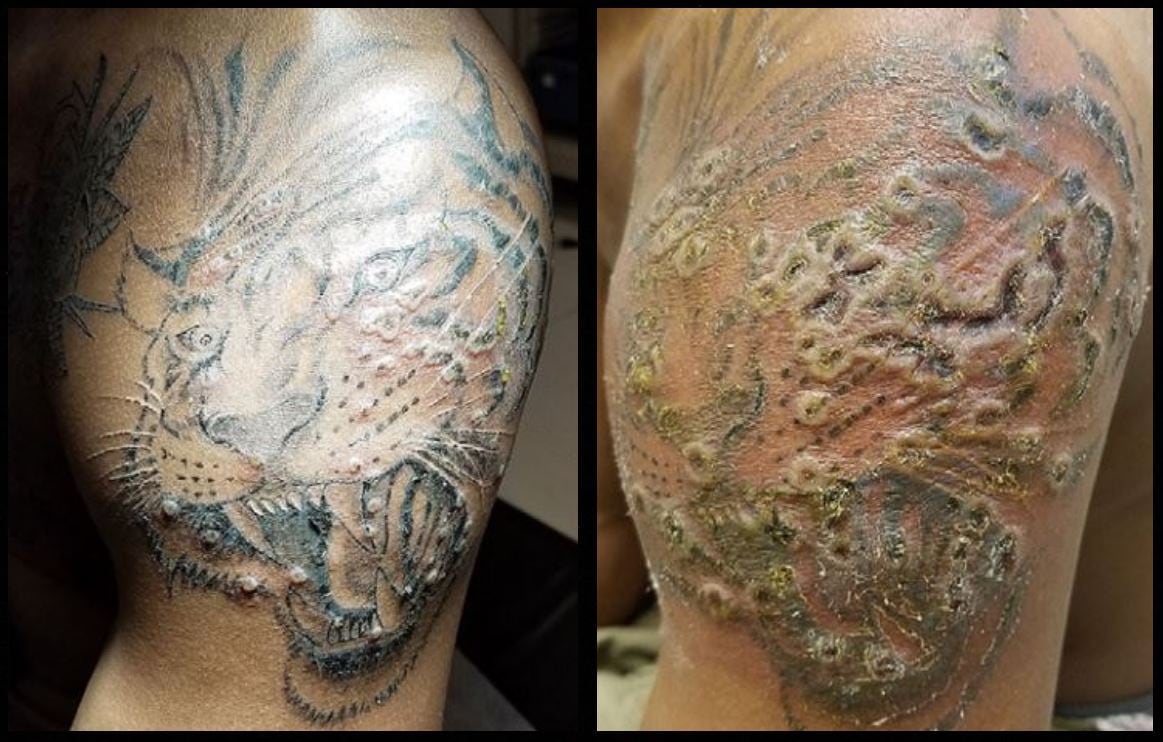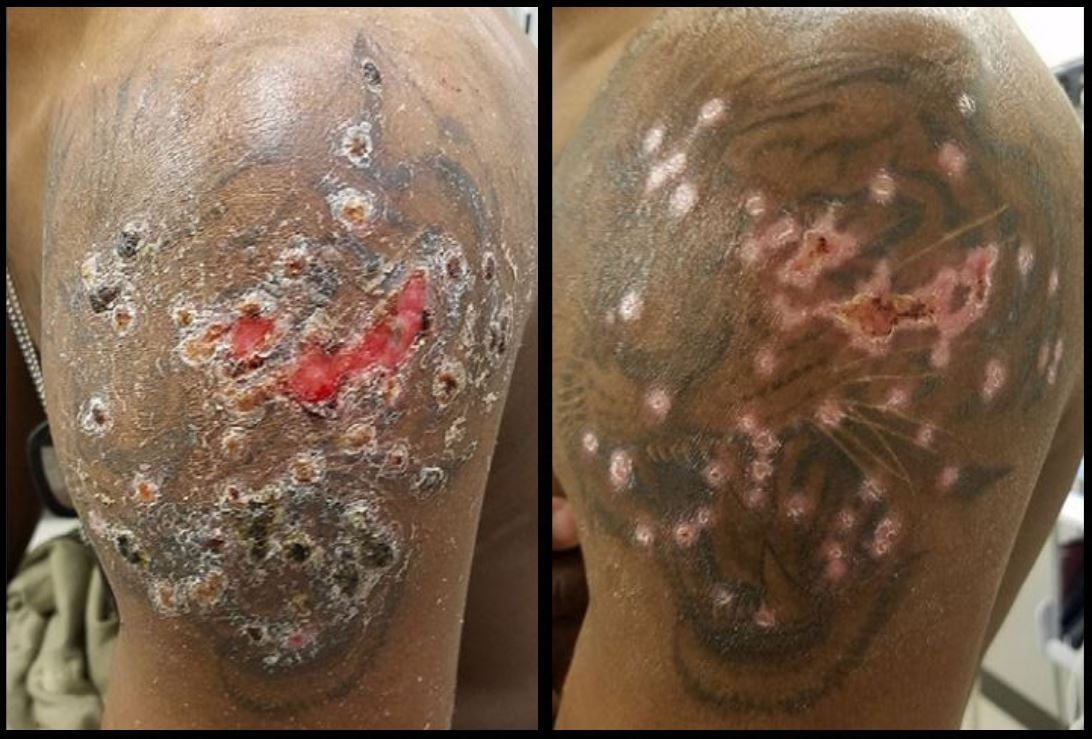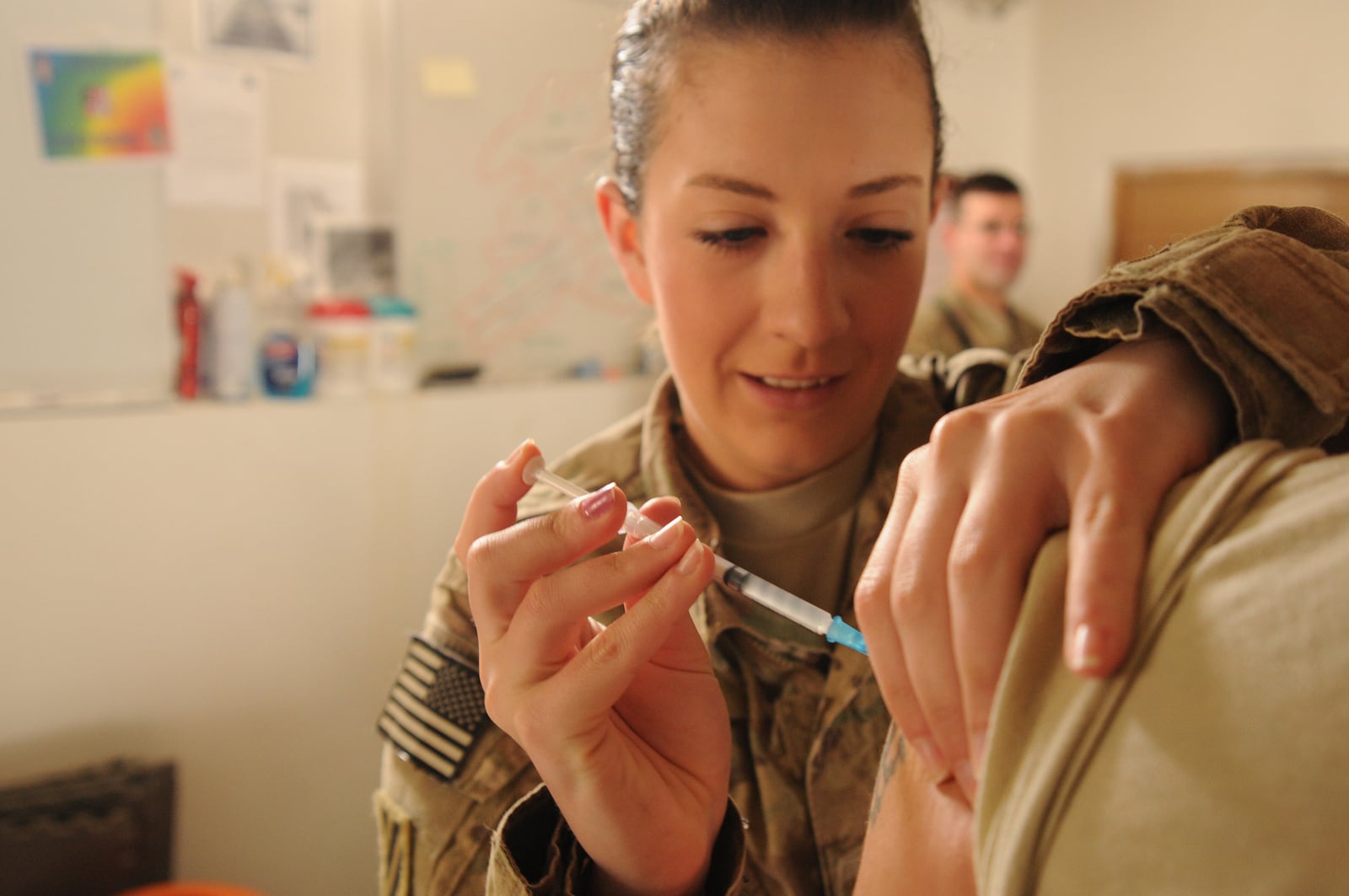A soldier who had his tattoo touched-up over his smallpox vaccination four days after he was immunized suffered from scattered bumps, which evolved into lesions and were accompanied by a fever, aches and a suspected secondary infection, according to a case study published last year in the peer-reviewed scientific journal Military Medicine.
The tattoo made his skin tissue inflamed and immuno-compromised, allowing the smallpox sister virus he was immunized with to erupt in that tissue. This reaction is the reason why medical personnel don’t give vaccines over inflamed tissues, and illustrates the risks of poorly adhering to post-vaccination care, the case study’s authors said.
The individual’s name was withheld, but the infection occurred in a 21-year-old male soldier several years ago. He received the smallpox vaccination as part of a brigade-wide vaccination for soldiers arriving late for a nine-month rotation to South Korea.
There have only been 13 cases of tattoo and smallpox inoculation complications reported in the national Vaccine Adverse Events Reporting System database over the past 15 years. In this case, the soldier’s leadership reported that he had not been wearing a bandage over his inoculation site as instructed and had been scratching it frequently.
“At the time of examination, the patient admitted to receiving a ‘touch up’ of a large tattoo directly over the inoculation site at a local tattoo parlor four days post-inoculation,” the study’s authors wrote.

The soldier was placed in isolation in his room with periodic follow-up checks by medical personnel over the course of several weeks. His tattoo artist was found and notified, as well.
Following a unit investigation and the notification of local health authorities, officials determined this was an isolated incident and there were no concerns of further needle contamination or spread to the local populace, according to the study.
When the soldier first reported to health professionals, his arm had an array of scattered flesh-colored papules. Those evolved over several days to the classic depressed lesions common in smallpox cases, with fevers, chills, sore and aching muscles, as well as a suspected secondary infection, according to the study.
A seven-day course of trimethoprim-sulfamethoxazole — an antibiotic — was prescribed to deal with the possible secondary bacterial infection.
Follow-up appointments were spaced out and documented until 23 days after he received the tattoo. The soldier’s lesions continued to heal throughout the follow-ups without further complication. His arm, however, was ultimately left with patches of discolored scarring.
Although smallpox has been eradicated worldwide, the dissolution of the Soviet Union in 1989 followed by the September 11, 2001, terror attacks, revived concerns over the use of smallpox as a biological weapon.
The George W. Bush administration began the National Smallpox Vaccination Program in late 2002, inoculating military personnel likely to be targeted in terror attacks abroad.

Using bifurcated needles, a live sister virus to smallpox is introduced into the skin by repeated punctures, a process largely unchanged over the past two centuries.
“The current inoculation method carries significant morbidity risks, especially if there is not proper aftercare,” the case study reads. “Despite current efforts to educate servicemembers on the dangers of poor aftercare, complications persist."
Tattoos, which are popular throughout all military services, have a near-identical method of administration to smallpox inoculations, the study’s authors noted. Cases like these are evidence of the importance of following aftercare instructions, they added.
“Providers should continue to make every effort to avoid collocating sites of tattoos and smallpox inoculation regardless of tattoo age," the authors wrote. "The case presented here serves to further stress the importance of adherence to aftercare to avoid significant complications.”
Army Public Health Command’s guidance mandates troops not receive new tattoos for 30 days after their smallpox inoculation, though the Military Vaccine Agency recommends that window extend to 60 days on a case-by-case basis.
Kyle Rempfer was an editor and reporter who has covered combat operations, criminal cases, foreign military assistance and training accidents. Before entering journalism, Kyle served in U.S. Air Force Special Tactics and deployed in 2014 to Paktika Province, Afghanistan, and Baghdad, Iraq.




